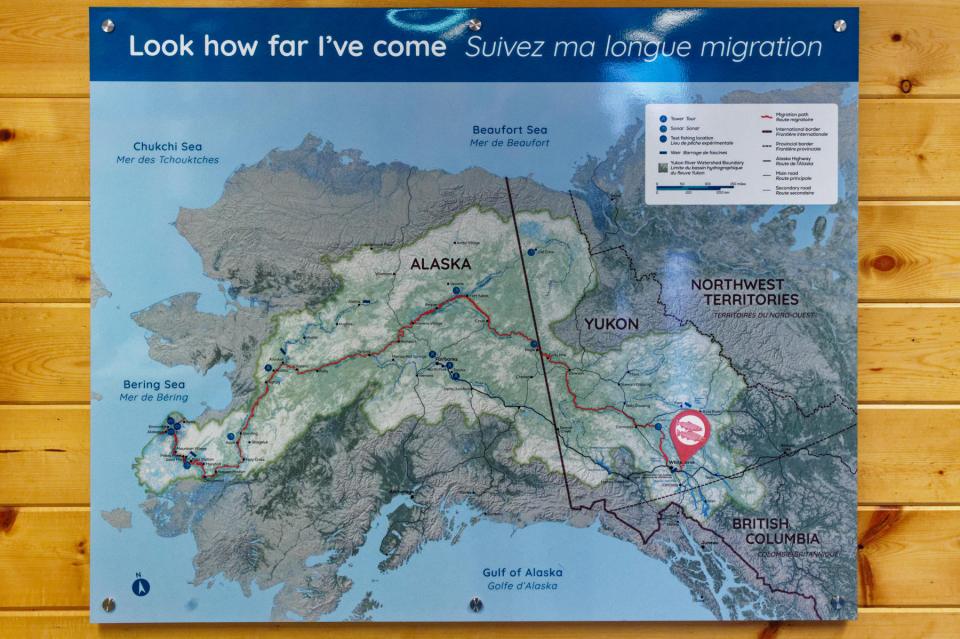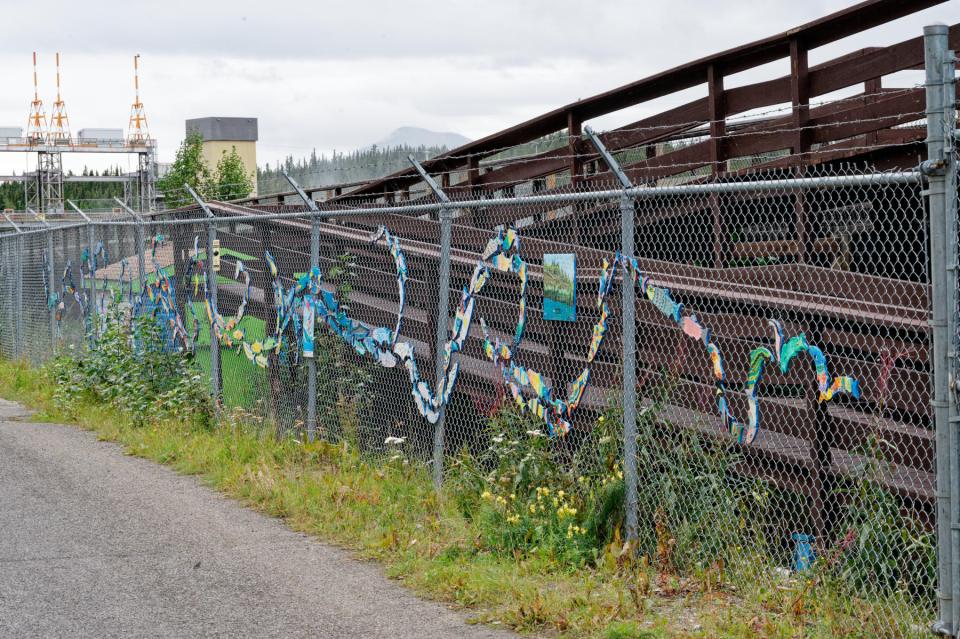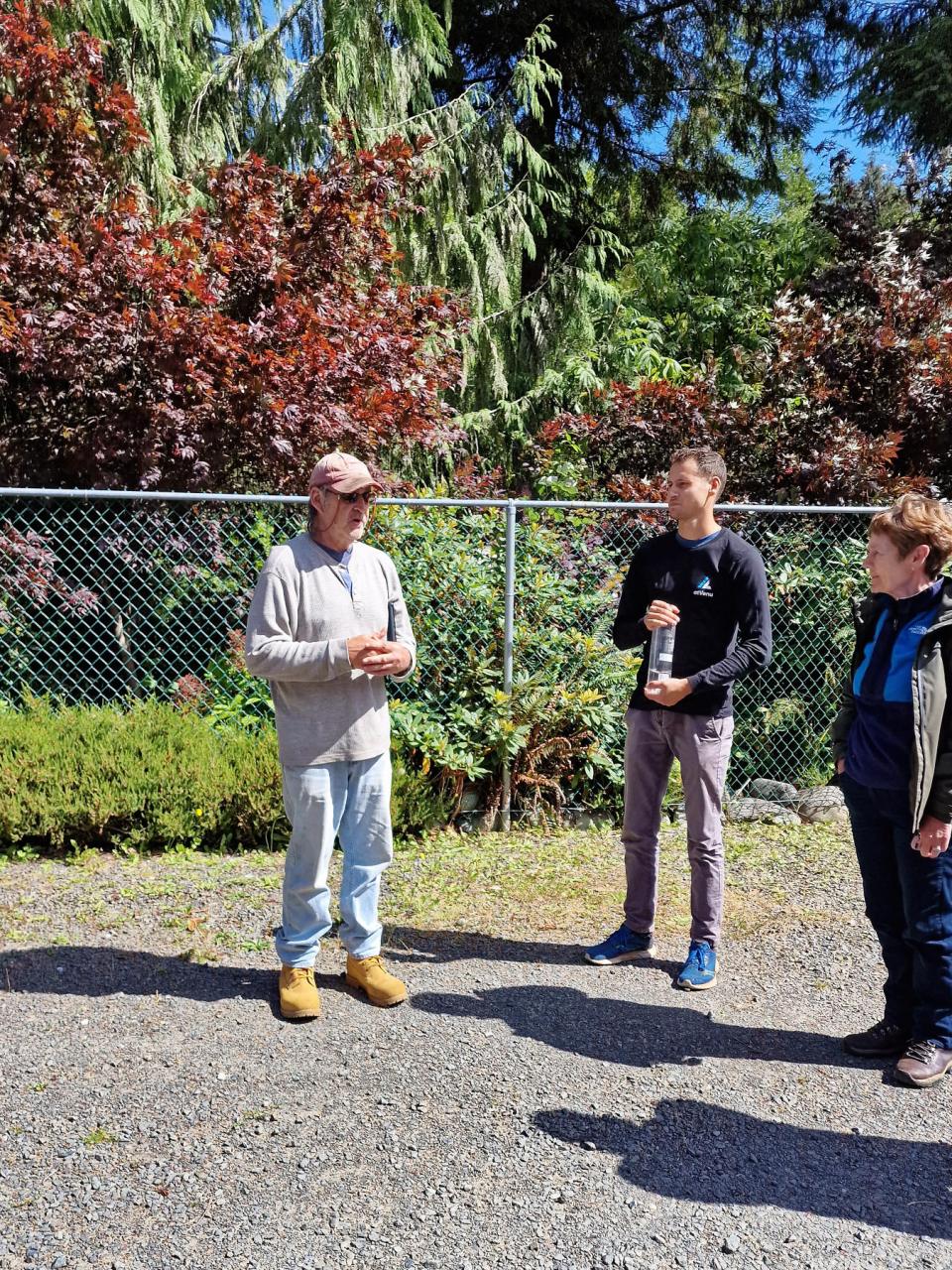Sunday 4 September 2022 – While we have made it a rule almost everywhere we’ve visited to go for an unstructured wander to explore (sorry, Kamloops – apparently you’re quite interesting after all), today was different in that the wandering would be structured – we were Going Hiking. With A Guide.
Of course, he wanted to make an early start, so once again we had to tear ourselves from the arms of Morpheus slightly earlier than we might have liked; however, since the day was forecast to be a fairly hot one, an early start was probably best. We met our guide, Geoff, in the hotel lobby and headed out to find the rest of the group he was leading on the hike. There were supposed to be five others; in the end, there were only four because he actually refused to take one lady on – she was, in his view, totally unprepared – wrong shoes, no backpack, no water. If it was the lady I thought I saw him talking to, he might also have assessed her as being physically the wrong shape to be taking on the hike.
Whatever, the group ended up as being just the six of us – Jane and me and two couples from Boulder, Colorado; Andrea and Dave, Susan and Scott. Geoff took us about half an hour out of Banff to the trailhead of the Stanley Glacier Trail in East Kootenay, dispensing some wisdom, safety guidelines and information about what we’d let ourselves in for. He described it as an eight km hike (four out and four back) of moderate toughness, which didn’t sound too daunting; but all the same he spent time making sure we had at least a litre of water each, and provided us with lunch packs. The schedule for the hike seemed very leisurely – starting before 9am and expecting to be done by about 2 or 2.30pm.
We started up the trail

which shows, in the distance the Stanley Head Wall, a face of Mount Stanley (yes, the same Stanley that the Vancouver Park is named for). The views as we went along were quite striking


but very hazy in places. Much of the haze is due to wildfire smoke, as wildfires are an important part of the cycle of nature in the Banff national Park as in other parks. The haze lightened as the day went on but it was, photographically speaking, a challenging day; allow me a geeky photo-type digression, here.
— START OF DIGRESSION: I SHAN’T BE OFFENDED IF YOU SKIP IT —
While modern cameras do a good job of extracting pleasing images from their sensors and presenting them to be viewed on a computer screen, they have to make editorial decisions about the data from the sensor in order to create such an image – so, for example, the .jpg file you see on your mobile phone screen has been extensively edited by the phone. When I take my Big Camera (Nikon Z6) with me to Take Serious Photos, I decline to have the camera make these decisions for me, as I want a greater degree of control, so I shoot in a format called RAW, which creates an image not immediately readable by a computer without specialist software (DxO Photolab is my go-to) but which has very much more data from the sensor available for the photographer to play with in creating a final image. (In the good old days, one played with bits of cardboard and an enlarger projection on to paper; digital life is much easier.)
The practical upshot is that in challenging conditions such as today, the camera will suggest this as an image with a lot of haze in the background:

whereas I know (because I was there) that there’s much more to the scene than this image shows. Once I’ve finished tinkering with the RAW file, the image looks like this:

Actually, the processed image is a little clearer than the reality as seen by the human eye; but I’m OK with this – what I’m after is not necessarily a recreation of that reality, but something that may be more striking.
The net of this rambling is to let you know that I have tinkered with virtually all of the images from the hike to bring out specific elements of the image that I consider important; they are not necessarily a representation of what I saw, but I hope that they go towards telling the story of the hike.
— END OF DIGRESSION —
Geoff

is a very experienced guide, as well as a writer and scientist, and has a wide and detailed knowledge of matters to do with the National Parks of North America; Yellowstone was the first to be established and Banff was the second. He said that the theme of the hike was “Wildfires and the Forest”, and it was very interesting to hear his perspective on forests, wilderness and managed ecologies. His philosophy is well expressed by work published in 1995 by one William Cronon called “The Trouble with Wilderness; or, Getting Back to the Wrong Nature.” Cronon said that it was time to rethink wilderness: that the the idea of wilderness as being a place that stands apart from humanity is wrong; and that wilderness – as an area that has no humans in it – is quite profoundly a human creation.
Geoff made a striking assertion: “The forest is doomed”. A forest is not a permanent entity; bits of it will die from logging, fire or disease. The cutting back or burning of forests saves the trees from dying of diseases caused by overcrowding and allows the forest to support a wider range of life. The indigenous peoples that have been in the area for tens of thousands of years knew this, and effectively managed the forests to improve their lives – a greater selection of wildlife which is easier to hunt. Fire was an important part of this management.
When Europeans came to the area and forced the indigenous peoples out, they lost sight of this; wildfires were regarded as something to be avoided or restricted – absence of wildfires was seen as a success. The result has been overcrowded, diseased forests with a paucity of wildlife, and only now has this realisation sunk in to the extent that proper action is being taken – or, at least, would be, were political will up to the task, which often it isn’t. A very interesting and counter-intuitive philosophy.
Anyhoo…
We passed some nice scenes of forest and creek





with plentiful evidence of previous forest fires.


Above, you can see the red colours of the fireweed that is first to grow back after a fire.
We met a grouse, unconcernedly pecking away at the path

until disturbed by some people who passed us with a couple of noisy dogs, when it flew up into a nearby tree and posed for us again.

We passed buffalo berry plants

which are prime fodder for grizzly bears. (Their other mainstay apparently is dandelions – dandelions – not much meat or fish in these here parts). The berries are, apparently, oily but I’m still astonished that berries can sustain an animal as big as a grizzly. Another name for the berries is soap berries, and if you taste one – carefully, just a little of the juice rather than a whole berry – you can understand why; they have overtones of bitter grapefruit juice and detergent.
After a while, the path got steeper

and we ended up, some 1,000 feet higher than the start, at our lunch spot. We were first there, but this trail is a popular one and so we were soon joined by others.

This is a big landscape.

In the distance, at the foot of the vertical bit of the Stanley Head Wall, were some climbers.

You can just make out some dots of colour near the white boulder at the bottom of the picture, with two red dots also visible some feet up the wall. I tried to give some idea of just how big this landscape is.
The distances are deceptive. For example, the patch of greenery towards the bottom of the picture above doesn’t look that far away,

but, on closer examination, actually has people in it

which are difficult to pick out with the naked eye (well, with my naked eye, anyway).
I tried taking photos of the glacier

and the waterfall caused by its melting

but, as I burbled about above, the light is extremely challenging, and it has taken quite a bit of fiddling to get images that I’m happy with. I just want you to know that I suffer for my art.
After an hour resting at the top, we retraced our footsteps down the trail. At the bottom, a stream we had crossed at the start of the trail was showing some lovely glacial blue colour in the water.


And that was it for the hike, which had been a really nice morning – an agreeable temperature, slightly demanding without being ridiculous and giving an opportunity to listen to Geoff’s wisdom about wildlife, ecology and forests.
My Garmin thingy told me, on returning to the hotel and a source of internettery, that we’d expended some 1,300 calories in the course of the hike, which is quite a lot, and could be interpreted as justification for taking it easy for the rest of the day.
So we went for a walk. Obviously.
Geoff had mentioned an area called Bow Falls, which is about half an hour’s walk from downtown Banff. We needed something to eat anyway, so we headed the 15 minutes to downtown, ate a decent, cheerfully served, early dinner at The Keg, and then headed out along the path towards the falls.
Downtown Banff was busy, probably more than usual because we were here over a Labor Day weekend

but the lower part of the main street has a pedestrian area and is attractive, particularly with the mountains as backdrop.

The path to the falls is a riverside walk, and one has to decide which side of the Bow River to walk on; there’s a pedestrian bridge to help when you’ve made the decision.

We went along the north shore towards the Surprise Corner viewpoint, passing some lovely bits of real estate


almost certainly worth a fortune. At the falls, one gets a pretty spectacular view

part of which is the Fairmont Banff Springs Hotel.

Given that we’ve stayed in Fairmonts in most other places, I assume that this one was full because of the holiday weekend. Anyway, the sight of the hotel we didn’t stay in complements the splendid view rather well.
We retraced our steps to our hotel. Along the path is a variety of artworks


including one which is some glass bats in a tree, which is a rather fetching idea.


Banff town itself is quite an attractive place, in a sort of American take on Swiss skiing town way.





And so ended a very pleasant, sunny day, with quite a few miles under our boot vibram and shoe leather. All that remained was an evening of wedded domestic bliss – me writing the blog and Jane doing the laundry, because These Things Are Important, You Know.
The morrow brings the promise of a ride up the Banff gondola and it will be interesting to see how the logistics of that works – it’s a holiday weekend, so it’ll likely be crowded. I’ll report back, of course, and I hope you’ll come back to see how it all went.




























 and – my favourite – a lynx. I wouldn’t have spotted it, but Jane did and between us we managed to get a very satisfactory image even though it was quite distant. My mobile phone did a great job, here.
and – my favourite – a lynx. I wouldn’t have spotted it, but Jane did and between us we managed to get a very satisfactory image even though it was quite distant. My mobile phone did a great job, here.












